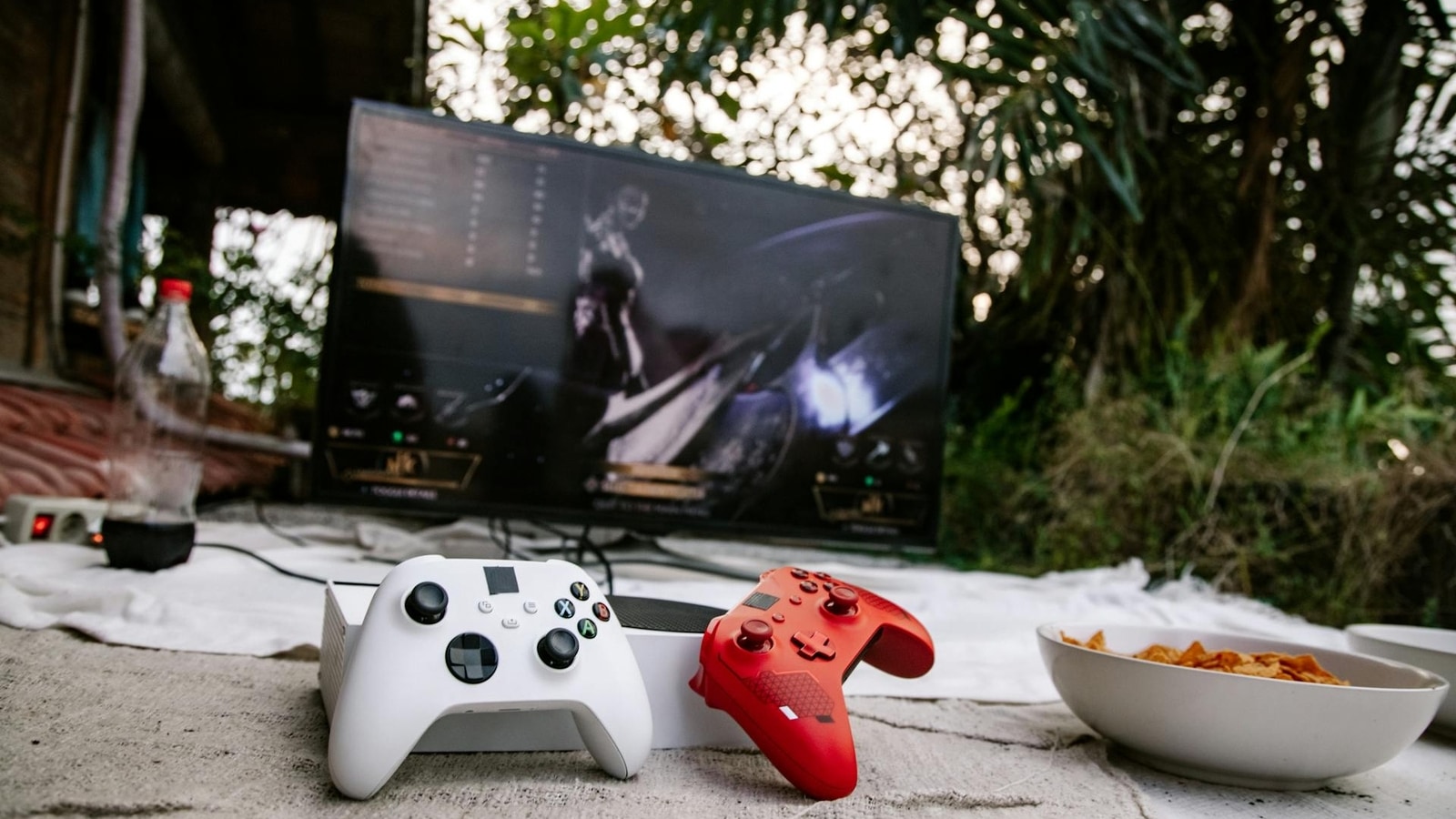Verdict
Hollyland has done it again, showing itself as the go-to brand for amateur content creators who want to get serious about upping their audio quality without breaking the bank. With a more compact design, better noise cancelling and stellar audio quality, the Hollyland Lark M2 is an instant winner.
Pros
- Couldn’t be easier to be use
- Greatly improved noise cancelling
- Better audio quality, despite being smaller
Cons
- Fast wind can disrupt the noise cancelling feature
- The Combo version needs a bigger charging case
Introduction
Hollyland’s entry-level mobile-focused wireless mic has been refreshed and several new features in the Hollyland Lark M2.
While the likes of Rode and DJI have had a foothold in the smartphone-compatible mic market for quite a few years now, they are no longer the only major player on the field.
Chinese company Hollyland has steadily begun to expand its offering in this space with a handful of excellent mics that seriously undercut the competition on price. While the Hollyland Lark C1 and Hollyland Lark Max have set themselves as mid-tier and premium-level products respectively, the Lark M2 sits below them as an affordable buy for content creators on a budget.
Despite its affordability, the Lark M2 brings a slight price bump over its predecessor which remains available. The question is, does the M2 bring enough to the table and make it a better pick in its price range?
Design
- Smaller puck-sized design
- Each mic weighs only 9g
- There’s a glaring issue with the ‘Combo’ version
The Hollyland Lark M2 looks nothing like its predecessor, but that’s not a bad thing. Hollyland has dropped the colourful aesthetic of the M1 and instead opted for something that prioritises accessibility, all while looking a little more professional.
Starting with the mics themselves (two were included with our review unit), Hollyland has ditched the rectangular clip-on design in favour of a button chassis with a magnetic backing. Not only does this make the mics less obtrusive when worn on your person, but it also gives you the freedom to swap out different accessories.
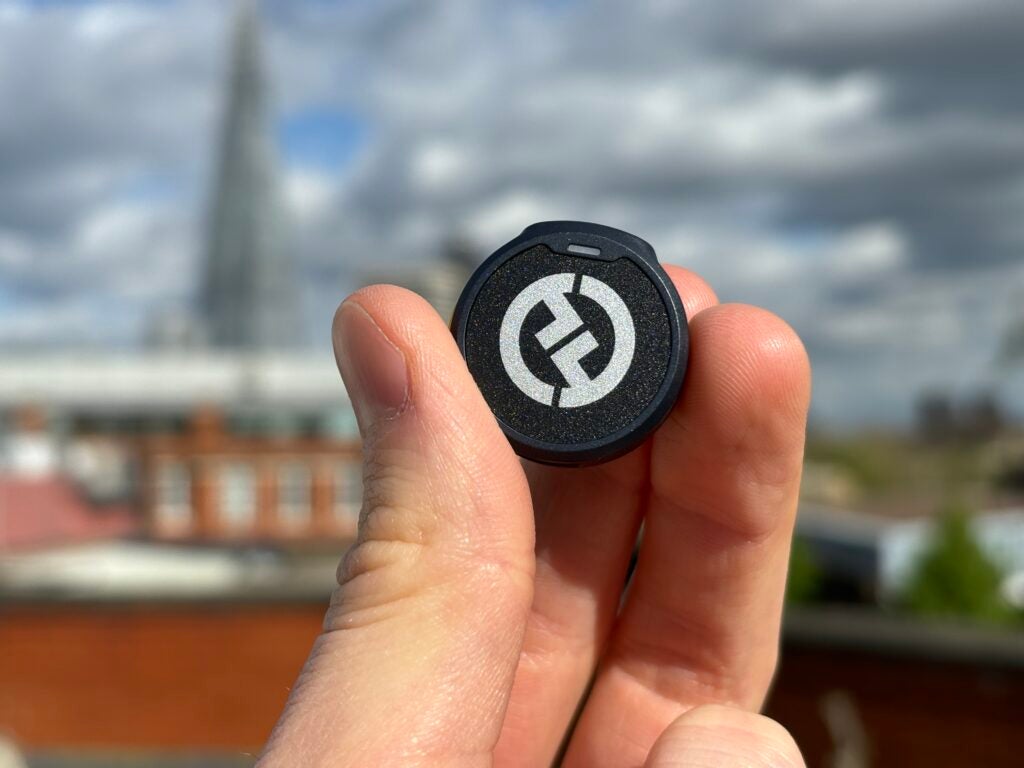
By default, the M2 mics come with removable magnetic pucks attached which can then be used to hold the mics in place by putting them underneath your clothing.
That might sound a little odd at first but I’ve quickly become accustomed to it, finding it far less distracting to have the mic at chest level rather than on my lapel. Still, if you prefer the old design then you can simply attach a magnetic clip-on accessory and wear the mic like the M1.
For the charging case, Hollyland has made the smart decision to move the USB-C port to the rear, so you can keep the case upright when topping up the battery. There’s also a smaller case available if you opt for the mobile-only version of the M2, while the larger option packs the all-new receiver for camera filming, which can sit on a cold shoe and allow you to adjust the volume levels on the go.
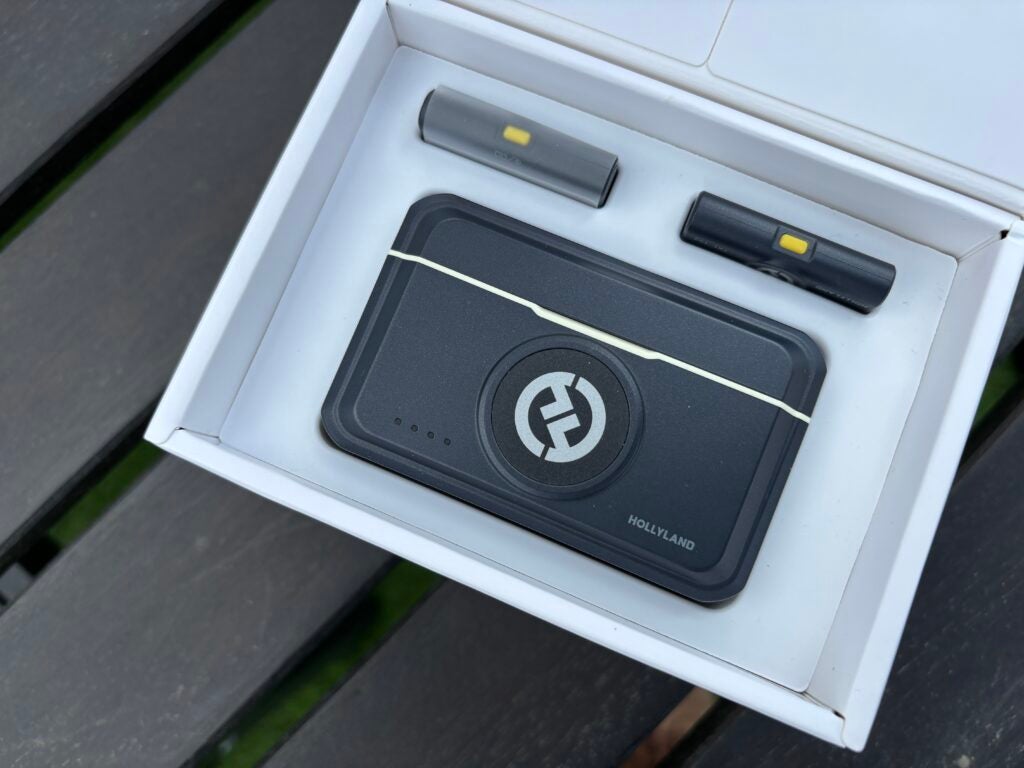
Even with the larger option, it’s all still compact enough to easily fit into a trouser pocket, but there’s one glaring issue with the ‘Combo’ version that includes all of the above. This is the model that was sent in for review, and while there is a slot to house the camera receiver, there is no way of housing either the USB-C or Lightning dongle without removing the receiver completely, so you’ll need a separate container to transport all of the components at once.
Features
- ENC dispels ambient noise
- The Lark M2 can now cover a distance of 1000ft
- Battery life is also improved at 40-hours
Easily the best feature that the Hollyland Lark M2 has going for it is its ease of use. The fact that you can just plug a receiver directly into the bottom of your phone and get straight into recording high-quality audio is exactly why I loved using the Lark C1, and it remains the same here.
The miniature dongle is still the best way for entry-level content creators to step up their audio levels, as it doesn’t require any additional consideration beyond having some sort of tripod for your phone. The pricier Lark Max for instance, while tremendous in its own right, has a much larger receiver that needs to be housed on the cold shoe mount of either a gimbal or a dedicated camera.
Of course, if you are shooting with a camera then the larger receiver can be connected via a 3.5mm cable, and it offers up a set of manual controls not found on the mobile dongles. This isn’t to say that you don’t have any controls when shooting via mobile – far from it.
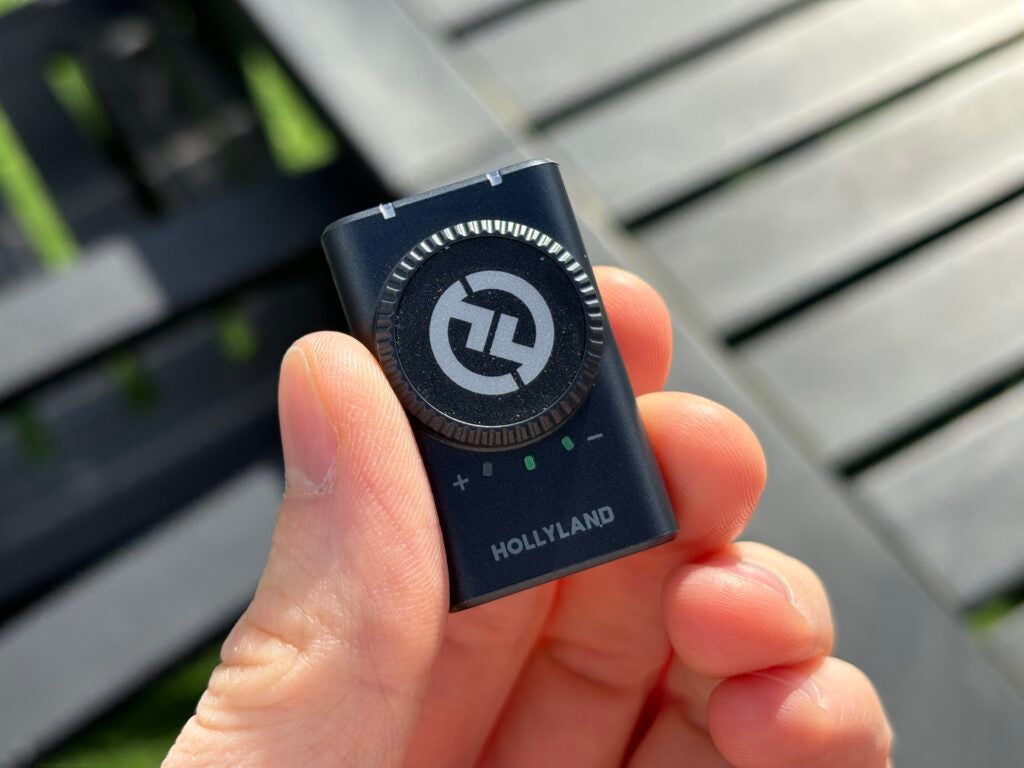
Thanks to the LarkSound app, you can tap into key settings like volume control, feedback levels and the strength of the M2’s environmental noise cancelling, which makes a return from the M1.
By pressing the yellow button featured on Lark M2 mics, you can activate the noise cancelling mode to keep unwanted sounds at bay and ensure that the vocals don’t get lost in the mix. When I last used the feature on the Lark C1, I found it to be helpful in a pinch, but there was a definite knock-on effect with the vocals to the point where I wouldn’t be inclined to use it unless it was necessary. This time around, there’s a noticeable leap in quality.
Testing the mics out on the office rooftop, the ENC was able to get rid of a persistent breeze completely, and any sounds from the London scene around me (sirens, building works, etc.) were nowhere to be found. Not only that, but the vocals also sounded crisp and clear, and I’d be surprised if anyone listening to playback could even pick up on any change in quality. It’s not a foolproof feature as the ENC was still thwarted by a serious gust of wind.
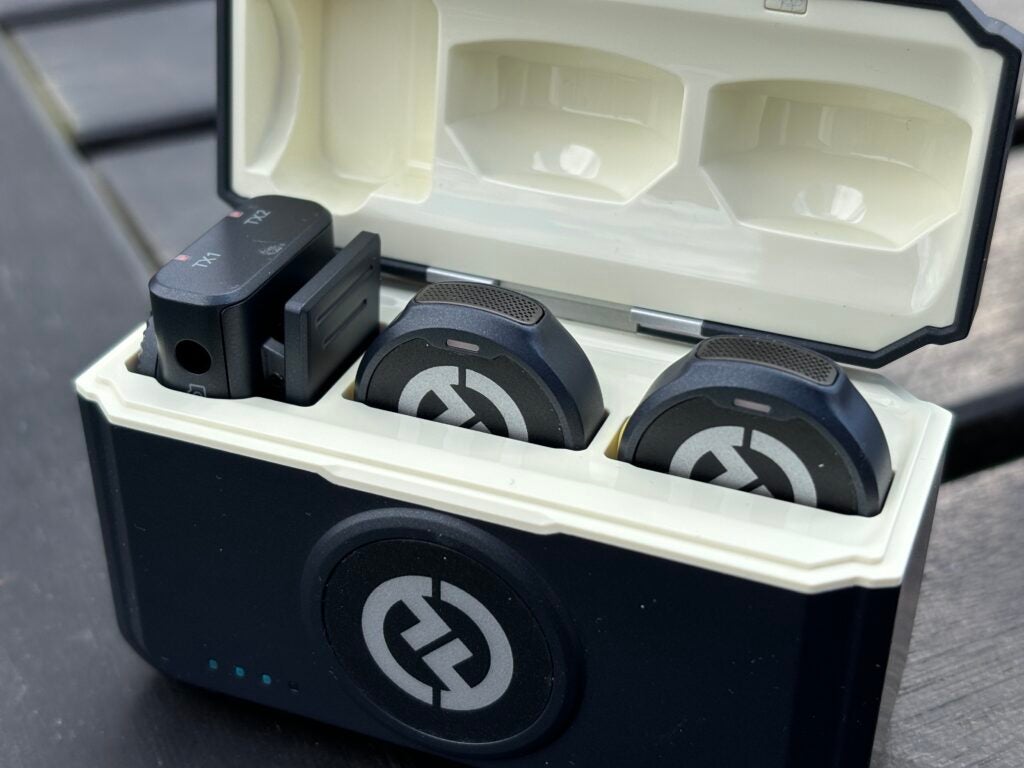
There is also a bump in the connection range offered up by the M2, moving from a cap of 650ft on the M1 to a far more impressive 1000ft.
For up close and personal footage, that level of range barely factors in but if you do want to place the camera at quite a distance away and get some ultra-wide vista shots with voice-over, at least the Lark M2 now provides you with that flexibility to be as creative as you see fit.
As a final cherry on top, the battery on both the individual mics and the charging case has been given a boost. It’s now possible to record for up to 10-hours at a time and record a total of 40-hours when the charging case is used to its full capacity. By this metric, the M2 outdoes both the M1 and the C1 for longevity, which is wild considering that the newer mics are smaller than ever.
Putting that claim to the test, a 30-minute recording which used ENC for roughly two minutes saw the mic drop to 94% battery, which just about works with Hollyland’s claim. With that in mind, you’ll be able to get through a proper day’s worth of filming without having to deal with any battery anxiety.
Audio quality
- Vocal capture is smooth
- No popping or peaks
- The Lark M2 naturally hones in on your voice
Where specs are concerned, the Hollyland Lark M2 also gets a boost in audio quality. It’s still 48kHz as before, but now the bit-depth has jumped from 16 to 24. That’s good news on paper, but what does it actually mean in testing? Well, in the time that I’ve spent with the Lark M2, I’m glad to report that I’ve been very impressed.
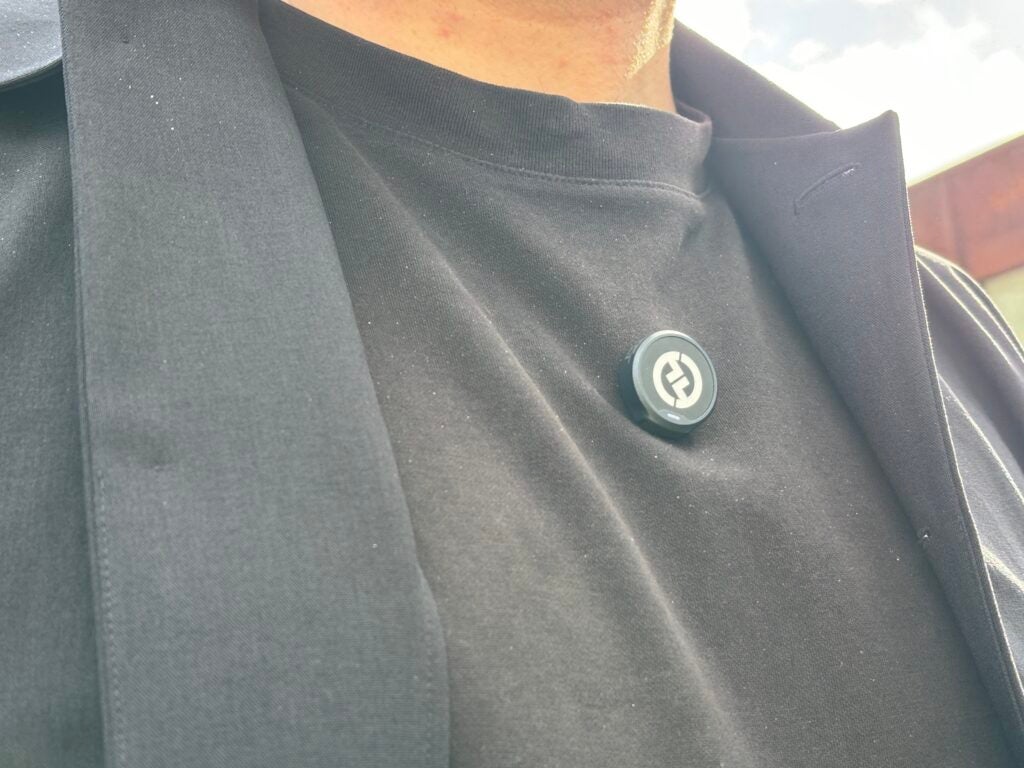
When it came to indoor filming and shooting a to-camera video for my YouTube channel, the Lark M2 did the job brilliantly, particularly as it was able to dispel any sense of echoing which is a known issue in the space where I film and almost instantly thwarts the built-in mics on smartphones.
Vocals come through clearly on the Lark M2 without any discernible popping, and my recordings had a soft balance to them that made them pleasing to the ear, leaving me with absolutely no need to then edit said vocals in post.
Where the Lark M2 really came into its own however is with outdoor filming. Taking the mic to the crowded Southbank around London’s Tate Modern gallery, the M2 had absolutely no issue with keeping my voice the sole focus of any recordings, almost entirely neglecting a helicopter that happened to fly overhead during testing.
Even the sound of passersby barely made a dent in the clarity of my vocals, and when I switched on the noise cancelling, it disappeared completely. Needless to say, I’ll be looking to bring the Hollyland Lark M2 with me for any outdoor recordings in the future.
Latest deals
Should you buy it?
You want an inexpensive mic for content creation:
The Hollyland Lark M2 is among the cheaper wireless mics available but that doesn’t stop it from being one of the best. You’d only want to plump up for professional level microphones.
You need top-tier recording equipment:
If you’re looking to go all-in on a podcast then you’re better off investing in a fixed mic that’s designed for optimum vocal capture.
Final Thoughts
From my experience in testing the excellent Hollyland Lark C1, my expectations were fairly high for the Lark M2 and yet this affordable mini microphone has managed to exceed them.
Even though this technically sits as a budget device, I would argue that amateur and part-time content creators will get on perfectly well with the Lark M2. Not only are the mics smaller than ever before, keeping them unobtrusive when in use, but the plug-in-and-play nature of the set-up just makes it incredibly easy for shooting on the go. No need for any elaborate accessories, just plug the receiver into your phone or camera and get to work.
This is all before mentioning the outstanding audio quality as well as the powerful noise cancelling feature that makes filming in crowded areas a breeze. The ENC isn’t foolproof however and can be outdone by a particularly vicious gust of wind, and more thought should have gone into the size of the charging case for the Combo version of the device. Unless you need a stationary mic like the Audio-Technica AT2020USB+ for podcasts, I can’t really think of any reason why you wouldn’t want to have the Hollyland Lark M2 in your recording arsenal.
How we test
During each microphone review, we conduct a series of recording tests that include sampling audio during ideal settings, with background noise applied and in an outdoor setting (where possible), to give you the best idea of how each device performs in real-world use.
FAQs
Yes, the USB-C receiver works with the iPhone 15 range as well as Android phones.
If you plug the camera receiver into a laptop or computer, then you can start recording audio via the Hollyland Lark M2 on that device.
Verdict
Hollyland has done it again, showing itself as the go-to brand for amateur content creators who want to get serious about upping their audio quality without breaking the bank. With a more compact design, better noise cancelling and stellar audio quality, the Hollyland Lark M2 is an instant winner.
Pros
- Couldn’t be easier to be use
- Greatly improved noise cancelling
- Better audio quality, despite being smaller
Cons
- Fast wind can disrupt the noise cancelling feature
- The Combo version needs a bigger charging case
Introduction
Hollyland’s entry-level mobile-focused wireless mic has been refreshed and several new features in the Hollyland Lark M2.
While the likes of Rode and DJI have had a foothold in the smartphone-compatible mic market for quite a few years now, they are no longer the only major player on the field.
Chinese company Hollyland has steadily begun to expand its offering in this space with a handful of excellent mics that seriously undercut the competition on price. While the Hollyland Lark C1 and Hollyland Lark Max have set themselves as mid-tier and premium-level products respectively, the Lark M2 sits below them as an affordable buy for content creators on a budget.
Despite its affordability, the Lark M2 brings a slight price bump over its predecessor which remains available. The question is, does the M2 bring enough to the table and make it a better pick in its price range?
Design
- Smaller puck-sized design
- Each mic weighs only 9g
- There’s a glaring issue with the ‘Combo’ version
The Hollyland Lark M2 looks nothing like its predecessor, but that’s not a bad thing. Hollyland has dropped the colourful aesthetic of the M1 and instead opted for something that prioritises accessibility, all while looking a little more professional.
Starting with the mics themselves (two were included with our review unit), Hollyland has ditched the rectangular clip-on design in favour of a button chassis with a magnetic backing. Not only does this make the mics less obtrusive when worn on your person, but it also gives you the freedom to swap out different accessories.

By default, the M2 mics come with removable magnetic pucks attached which can then be used to hold the mics in place by putting them underneath your clothing.
That might sound a little odd at first but I’ve quickly become accustomed to it, finding it far less distracting to have the mic at chest level rather than on my lapel. Still, if you prefer the old design then you can simply attach a magnetic clip-on accessory and wear the mic like the M1.
For the charging case, Hollyland has made the smart decision to move the USB-C port to the rear, so you can keep the case upright when topping up the battery. There’s also a smaller case available if you opt for the mobile-only version of the M2, while the larger option packs the all-new receiver for camera filming, which can sit on a cold shoe and allow you to adjust the volume levels on the go.

Even with the larger option, it’s all still compact enough to easily fit into a trouser pocket, but there’s one glaring issue with the ‘Combo’ version that includes all of the above. This is the model that was sent in for review, and while there is a slot to house the camera receiver, there is no way of housing either the USB-C or Lightning dongle without removing the receiver completely, so you’ll need a separate container to transport all of the components at once.
Features
- ENC dispels ambient noise
- The Lark M2 can now cover a distance of 1000ft
- Battery life is also improved at 40-hours
Easily the best feature that the Hollyland Lark M2 has going for it is its ease of use. The fact that you can just plug a receiver directly into the bottom of your phone and get straight into recording high-quality audio is exactly why I loved using the Lark C1, and it remains the same here.
The miniature dongle is still the best way for entry-level content creators to step up their audio levels, as it doesn’t require any additional consideration beyond having some sort of tripod for your phone. The pricier Lark Max for instance, while tremendous in its own right, has a much larger receiver that needs to be housed on the cold shoe mount of either a gimbal or a dedicated camera.
Of course, if you are shooting with a camera then the larger receiver can be connected via a 3.5mm cable, and it offers up a set of manual controls not found on the mobile dongles. This isn’t to say that you don’t have any controls when shooting via mobile – far from it.

Thanks to the LarkSound app, you can tap into key settings like volume control, feedback levels and the strength of the M2’s environmental noise cancelling, which makes a return from the M1.
By pressing the yellow button featured on Lark M2 mics, you can activate the noise cancelling mode to keep unwanted sounds at bay and ensure that the vocals don’t get lost in the mix. When I last used the feature on the Lark C1, I found it to be helpful in a pinch, but there was a definite knock-on effect with the vocals to the point where I wouldn’t be inclined to use it unless it was necessary. This time around, there’s a noticeable leap in quality.
Testing the mics out on the office rooftop, the ENC was able to get rid of a persistent breeze completely, and any sounds from the London scene around me (sirens, building works, etc.) were nowhere to be found. Not only that, but the vocals also sounded crisp and clear, and I’d be surprised if anyone listening to playback could even pick up on any change in quality. It’s not a foolproof feature as the ENC was still thwarted by a serious gust of wind.

There is also a bump in the connection range offered up by the M2, moving from a cap of 650ft on the M1 to a far more impressive 1000ft.
For up close and personal footage, that level of range barely factors in but if you do want to place the camera at quite a distance away and get some ultra-wide vista shots with voice-over, at least the Lark M2 now provides you with that flexibility to be as creative as you see fit.
As a final cherry on top, the battery on both the individual mics and the charging case has been given a boost. It’s now possible to record for up to 10-hours at a time and record a total of 40-hours when the charging case is used to its full capacity. By this metric, the M2 outdoes both the M1 and the C1 for longevity, which is wild considering that the newer mics are smaller than ever.
Putting that claim to the test, a 30-minute recording which used ENC for roughly two minutes saw the mic drop to 94% battery, which just about works with Hollyland’s claim. With that in mind, you’ll be able to get through a proper day’s worth of filming without having to deal with any battery anxiety.
Audio quality
- Vocal capture is smooth
- No popping or peaks
- The Lark M2 naturally hones in on your voice
Where specs are concerned, the Hollyland Lark M2 also gets a boost in audio quality. It’s still 48kHz as before, but now the bit-depth has jumped from 16 to 24. That’s good news on paper, but what does it actually mean in testing? Well, in the time that I’ve spent with the Lark M2, I’m glad to report that I’ve been very impressed.

When it came to indoor filming and shooting a to-camera video for my YouTube channel, the Lark M2 did the job brilliantly, particularly as it was able to dispel any sense of echoing which is a known issue in the space where I film and almost instantly thwarts the built-in mics on smartphones.
Vocals come through clearly on the Lark M2 without any discernible popping, and my recordings had a soft balance to them that made them pleasing to the ear, leaving me with absolutely no need to then edit said vocals in post.
Where the Lark M2 really came into its own however is with outdoor filming. Taking the mic to the crowded Southbank around London’s Tate Modern gallery, the M2 had absolutely no issue with keeping my voice the sole focus of any recordings, almost entirely neglecting a helicopter that happened to fly overhead during testing.
Even the sound of passersby barely made a dent in the clarity of my vocals, and when I switched on the noise cancelling, it disappeared completely. Needless to say, I’ll be looking to bring the Hollyland Lark M2 with me for any outdoor recordings in the future.
Latest deals
Should you buy it?
You want an inexpensive mic for content creation:
The Hollyland Lark M2 is among the cheaper wireless mics available but that doesn’t stop it from being one of the best. You’d only want to plump up for professional level microphones.
You need top-tier recording equipment:
If you’re looking to go all-in on a podcast then you’re better off investing in a fixed mic that’s designed for optimum vocal capture.
Final Thoughts
From my experience in testing the excellent Hollyland Lark C1, my expectations were fairly high for the Lark M2 and yet this affordable mini microphone has managed to exceed them.
Even though this technically sits as a budget device, I would argue that amateur and part-time content creators will get on perfectly well with the Lark M2. Not only are the mics smaller than ever before, keeping them unobtrusive when in use, but the plug-in-and-play nature of the set-up just makes it incredibly easy for shooting on the go. No need for any elaborate accessories, just plug the receiver into your phone or camera and get to work.
This is all before mentioning the outstanding audio quality as well as the powerful noise cancelling feature that makes filming in crowded areas a breeze. The ENC isn’t foolproof however and can be outdone by a particularly vicious gust of wind, and more thought should have gone into the size of the charging case for the Combo version of the device. Unless you need a stationary mic like the Audio-Technica AT2020USB+ for podcasts, I can’t really think of any reason why you wouldn’t want to have the Hollyland Lark M2 in your recording arsenal.
How we test
During each microphone review, we conduct a series of recording tests that include sampling audio during ideal settings, with background noise applied and in an outdoor setting (where possible), to give you the best idea of how each device performs in real-world use.
FAQs
Yes, the USB-C receiver works with the iPhone 15 range as well as Android phones.
If you plug the camera receiver into a laptop or computer, then you can start recording audio via the Hollyland Lark M2 on that device.








